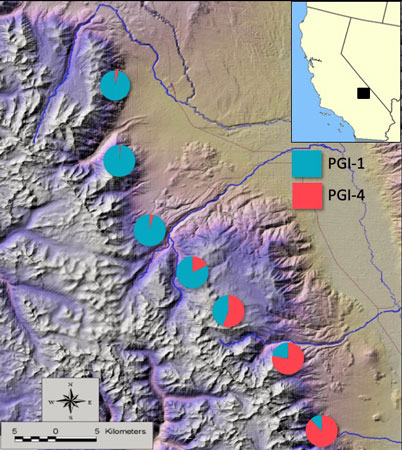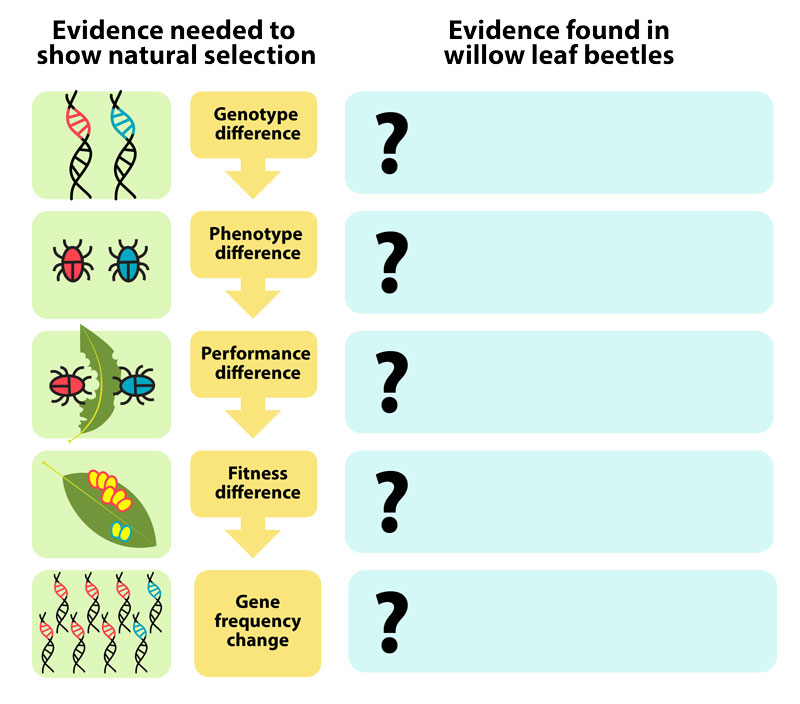
The first step in investigating the PGI polymorphism was documenting how temperature varied over the beetles’ range and comparing it to how the two versions of PGI were distributed over that area. Elizabeth and Nathan soon determined that there was a temperature gradient and that it correlated with PGI. PGI-1 was most common in Rock Creek, the northernmost area where temperatures were coolest, and PGI-4 was most common at Big Pine Creek, the warmest area. The pattern aligned with a clear hypothesis: that the beetles’ PGI gene is undergoing natural selection based on temperature, with PGI-1 favored where it’s cooler and PGI-4 favored where it’s warmer. To make the case for this hypothesis what sort of evidence would Elizabeth and Nathan need? A lot, as it turns out.
To understand the many lines of evidence required, you can start thinking at the level of the gene, and imagine all the ways a genetic difference impacts the organism and population. In order for natural selection to act on a gene, different versions of that gene would have to impact an organism’s features or phenotype (i.e., its physiology, appearance, traits, etc.). And that phenotype would, in turn, have to affect how the organism performs in its natural environment. And that performance would have to lead to differences in survival and reproductive capability (i.e., evolutionary fitness) in the wild depending on which versions of the gene the individual carries. And finally, those differences in fitness would have to lead to changes in the frequency of the different gene versions in the wild — the ultimate manifestation of natural selection. That’s a lot of dots to connect!
Elizabeth and Nathan knew that the beetles had two versions of the PGI protein and that there was a difference in the frequency of the gene underlying this protein in the wild. But they didn’t have any of the intervening links in the chain or even know the exact DNA difference responsible for producing the two different versions of the protein.
Learn more about Earth's changing temperature on the Understanding Global Change site.
Get tips for using research profiles, like this one, with your students.

